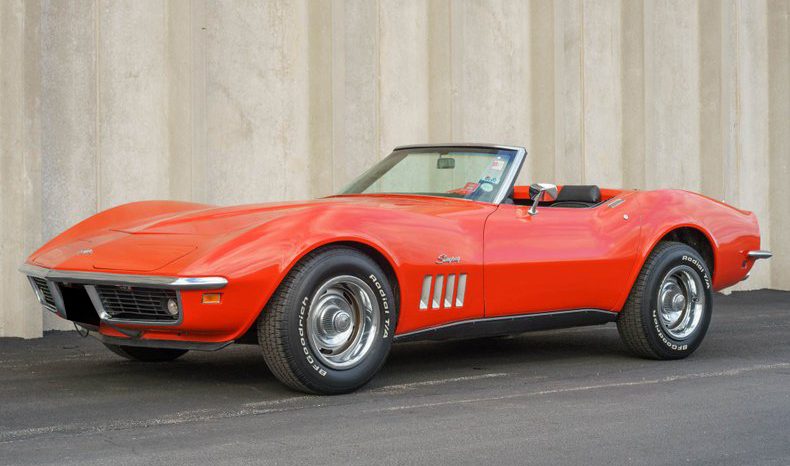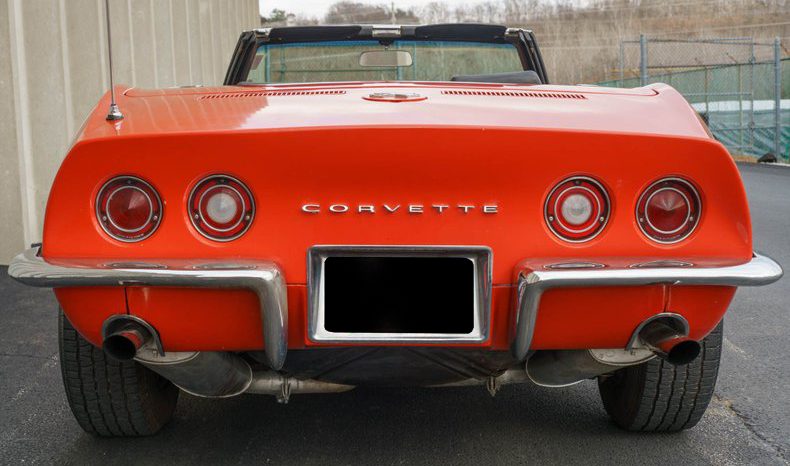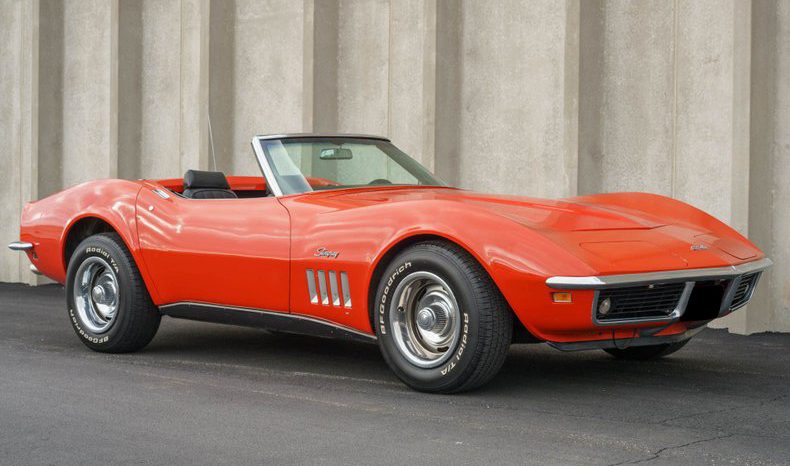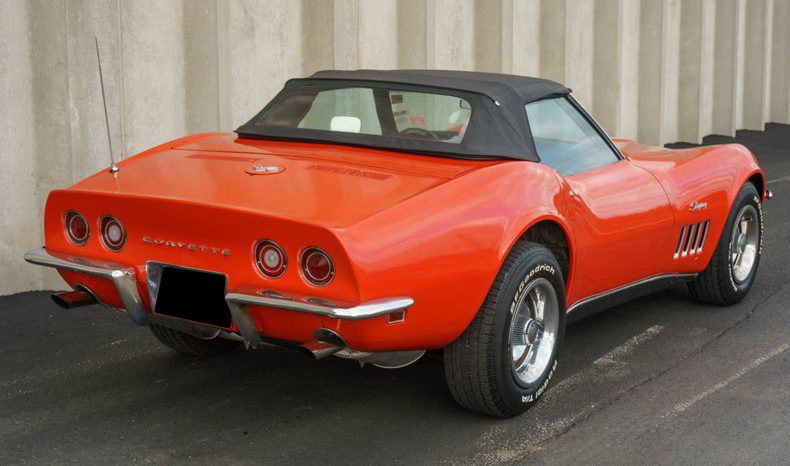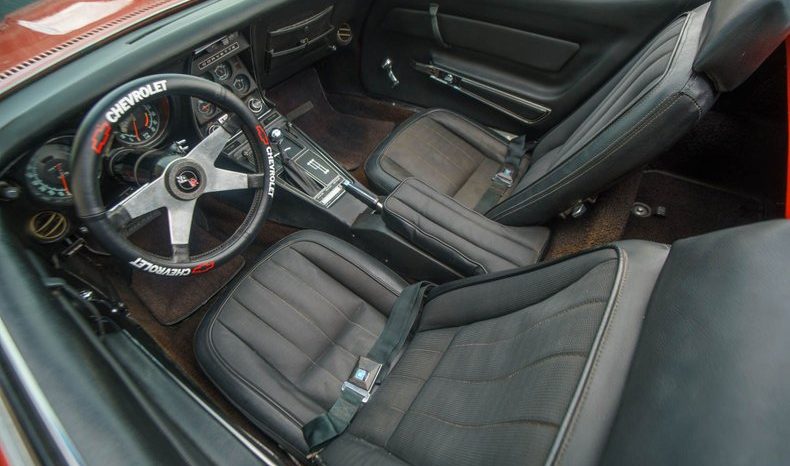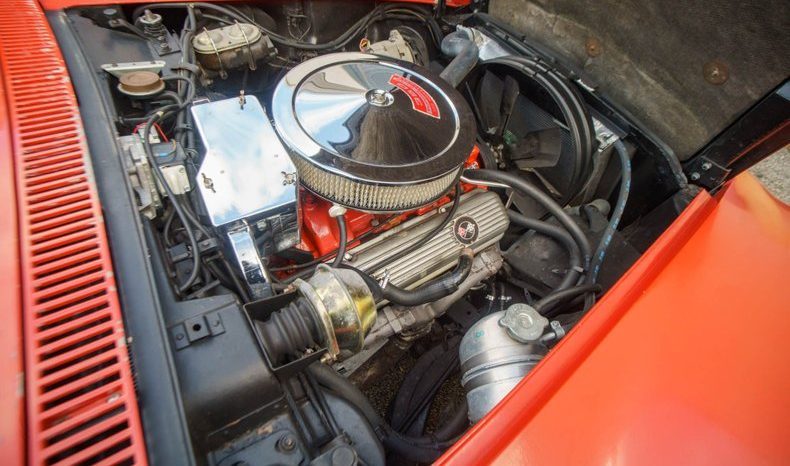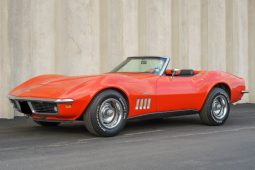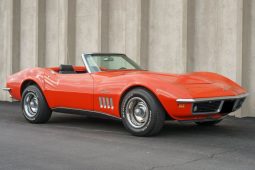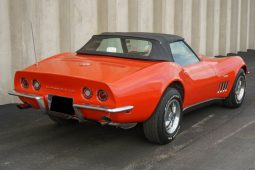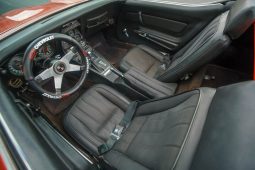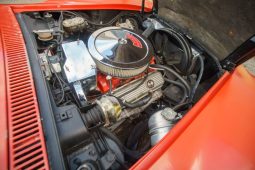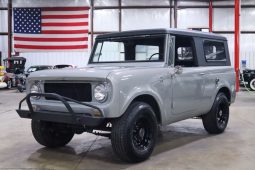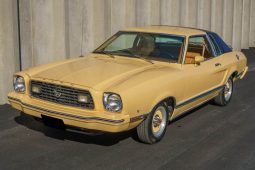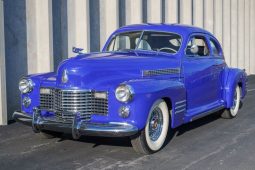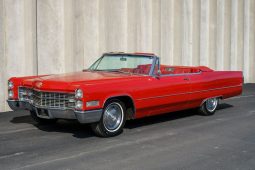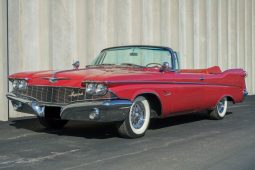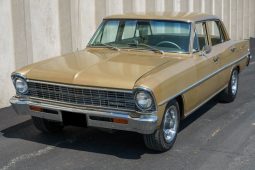For the second year of the third-generation Chevrolet Corvette, many refinements were made to improve upon the inaugural 1968 model, correcting a few issues that arose during its first production. This particular example was produced at General Motors' St. Louis, Missouri factory, and as with all Corvettes from this era, it carries the classic American muscle car spirit. The car is being offered by a local consignor who inherited it from his father.
Finished in the striking Monaco Orange (code 990), the car's paint and trim show signs of wear, with some noticeable surface blemishes. The body is solid and straight, with the chrome bumpers fitting snugly to the body. This Corvette features GM's Astro Ventilation system, which replaced the side vent windows that were a hallmark of earlier Corvettes (1963-1967). Over the past 28 years of ownership, numerous suspension parts have been replaced and maintenance has been performed, making it a great driver in its current state, or an ideal candidate for restoration to its original glory.
This convertible sits on BFGoodrich Radial T/As, size 205/70R15, at each corner, all mounted on the factory turbine-style alloy wheels. Both the tires and wheels are in satisfactory condition.
Under the forward-hinged hood lies a 350 CID Turbo-Fire V-8 engine (codes L46 and HW), producing a healthy 350 gross horsepower with an 11.0:1 compression ratio. The engine features a Rochester Quadrajet carburetor (#7029207) and dual exhausts, among other components, including the engine block (#3970010) and heads (#3927186). This engine is mated to a Muncie four-speed manual transmission (code M21). Additional driver conveniences include power steering.
In 1969, Chevrolet's small-block engine displacement increased from 327 to 350 CID, although output remained the same. The L30 base engine was now designated the ZQ3, and the L79 engine was replaced by the L46. All Corvettes for this year featured eight-inch-wide steel wheels, with tire sizes remaining the same, but white-lettered tires were now available as an option. The optional Positraction rear axle was installed on more than 95% of cars, and rear axle ratios ranged from 2.73 to 4.56, with the standard ratios being 3.08 for automatic transmissions and 3.36 for manuals.
Notable exterior changes for 1969 included new "Stingray" nameplates (one word, instead of "Sting Ray"), redesigned exterior door handles, integrated backup lights in the taillights, headlight washers, blacked-out front grilles, and options such as side-mounted exhausts and fender vent trim. This year also marked the final year for red-striped tires.
Inside, the 1969 Corvette's cabin saw some improvements, such as revised door panels to provide more shoulder room, standard headrests, and a reduction in steering wheel diameter from 16 to 15 inches, making entry and exit easier. The ignition switch was moved from the dash to the steering column, and map pockets were added to the passenger side of the dashboard.
This 1969 Corvette Stingray is a fantastic blend of vintage performance and iconic American styling, ready to be driven as-is or restored to its original specifications. Whether you're a Corvette enthusiast or looking to add a classic muscle car to your collection, this example is a fantastic option.

